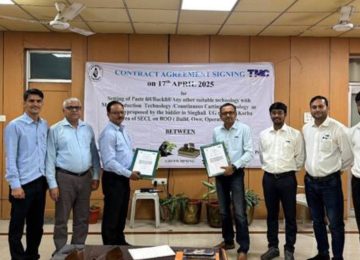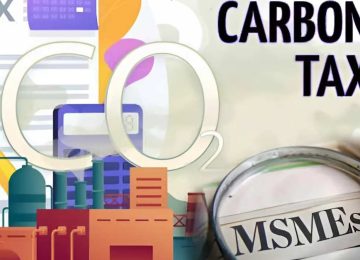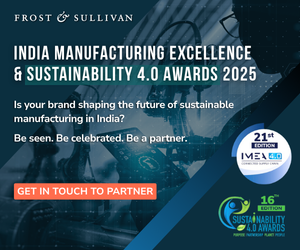Global plastic production has surged, reaching an estimated 390.7 million metric tons in 2022. The UNEP predicts that by 2025, the world will consume 516 million tons of plastic, with 13 million tons accumulating annually in soils. Reports suggest that plastic waste is likely to triple by 2060 if business-as-usual scenarios persist.
Despite global campaigns to curb the use of single-use plastic, progress remains slow, particularly in high-density, geographically diverse markets like India, which generates approximately 3.5 million metric tons of plastic waste annually. The long-term consequences—plastic-contaminated supply chains, ecosystem degradation, and health hazards—demand urgent, strategic action.
The high cost of plastic pollution:
The business impact of plastic waste is undeniable.
Supply chain risks: Microplastics have infiltrated global food and water sources. Studies indicate that humans may ingest up to 5 grams of plastic per week, equivalent to a credit card, through food, water, and even air. This poses significant threats to the agricultural and fast-moving consumer goods (FMCG) sectors, potentially impacting food safety, quality, and consumer trust. The UN estimates the economic damage to marine ecosystems from plastics to be at least $13 billion per year.
Regulatory pressure: Governments worldwide are tightening regulations. As of 2023, over 90 countries have implemented national or sub-national bans or restrictions on single-use plastics. For instance, the European Union’s Single-Use Plastics Directive aims to significantly reduce the consumption of certain plastic products. Companies must adapt to this evolving regulatory landscape or face penalties and market access limitations.
Brand reputation: Consumer preferences are shifting. A 2023 global survey by NielsenIQ found that 78% of consumers feel that companies should be responsible for the environmental impact of their products, and many are willing to pay more for sustainable alternatives. Plastic dependence is increasingly becoming a competitive disadvantage, eroding brand loyalty among environmentally conscious consumers.
Ecological damage: The environmental toll is severe and visible. From plastic “rocks” (plastiglomerates) documented in diverse locations like India’s Andaman Islands and Brazil’s Trindade Island to the estimated 100,000 marine mammals and 1 million seabirds killed annually by plastic pollution, the disruption to natural resources that businesses and communities rely on is immense. Plastic debris now constitutes 80% of all marine pollution.
Yet, while policymakers advocate for reduced plastic consumption, production of virgin, non-recyclable plastics continues largely unchecked.
Global plastic waste generation is projected to almost triple by 2060, with around half ending up in landfills and less than a fifth recycled.
Why?
Because the plastic industry is deeply entrenched in global manufacturing, cheap, scalable, and embedded in existing supply chains. However, these perceived short-term cost savings pale in comparison to the long-term liabilities of inaction, including estimated annual costs of $300-$600 billion to society due to plastic pollution’s impact on tourism, fisheries, and health.
Corporate responsibility: Turning risk into opportunity:
What businesses can do?
To future-proof operations and align with ESG (Environmental, Social, and Governance) goals, companies must act fast.
Phase out single-use plastic: Transition to biodegradable, compostable, or reusable packaging. For example, some companies are exploring materials like seaweed-based packaging or mushroom-based mycelium.
Invest in circular economy: Design products for durability and recyclability. Partner with waste management innovators to improve collection and reprocessing.
The circular economy for plastics could create 700,000 net additional jobs by 2040 and generate savings of $200 billion per year.
Adopt sustainable sourcing: Work collaboratively with suppliers to eliminate unnecessary plastic in raw materials and intermediate products. This includes setting clear targets for recycled content.
Leverage consumer demand: Market eco-friendly alternatives as premium differentiators, highlighting their reduced environmental footprint and appealing to the growing segment of conscious consumers.
Government’s role in enabling change:
Policy interventions must go beyond awareness campaigns and drive systemic shifts.
- Incentivize green innovation: Offer tax benefits from breaks), grants, and other financial incentives for research and development in plastic alternatives and advanced recycling technologies.
- Mandate and strengthen extended producer responsibility (EPR): Hold manufacturers financially and operationally accountable for the end-of-life management of their plastic products. Effective EPR schemes can significantly increase recycling rates.
- Subsidize sustainable materials: Implement policies that make plant-based, compostable, or recycled plastic packaging more cost-competitive with virgin plastics, potentially through carbon taxes or virgin plastic taxes.
- Strengthen recycling infrastructure: Invest in public-private partnerships to improve waste collection, sorting, and processing capabilities.
Globally, only about 9% of plastic waste has been recycled, highlighting a massive infrastructure gap. India aims to recycle 50% of its plastic waste by 2028-29.
Profitability MEETS sustainability:
This World Environment Day, the message is clear. Sustainability is not just ethics—it’s economics. Forward-thinking companies are already capitalizing on the shift.
Unilever, for instance, has trialled reusable packaging systems in various markets and aims to halve its use of virgin plastic by 2025.
Numerous startups are innovating with alternatives like edible cutlery made from grains or biodegradable food containers. The market for bioplastics alone is projected to grow from $12.07 billion in 2023 to $30.89 billion by 2030.
For businesses, the choice is stark—adapt now by integrating sustainable practices or face escalating regulatory, reputational, and financial risks later.
For consumers, it’s about demanding better products and supporting businesses that prioritize sustainability. And for policymakers, it’s time to enforce accountability at the production level and create an enabling environment for a circular plastics economy.
Reducing plastic pollution isn’t a cost—it’s an investment in resilience, innovation, brand reputation, and long-term, sustainable growth.












